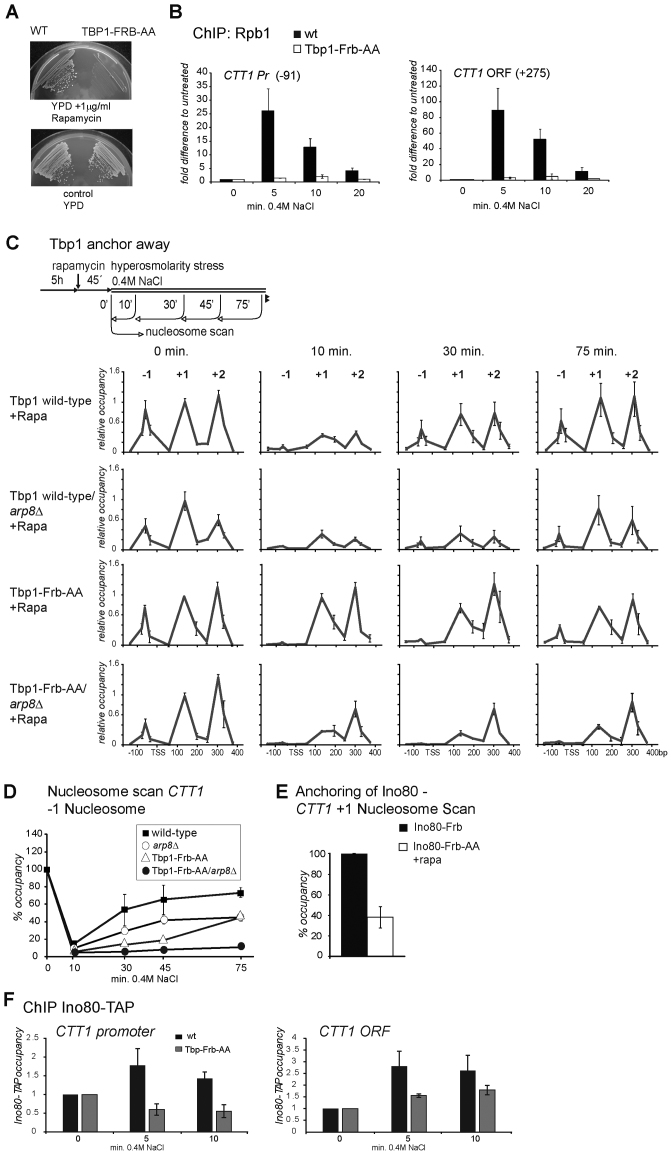Figure 6.
INO80 and transcription stabilize the +1 nucleosome of CTT1. (A) Depletion of the TATA binding protein 1 (Tbp1/Spt15) from the nucleus by anchoring to the cytosolic ribosomes is rapid and prevents gene transcription. The strain HHY154 (TBP1-FRB) does not grow on medium containing 1 μg/ml rapamycin while HHY168 (TBP1 wild-type) does. (B) Nuclear depletion of Tbp1 by anchoring inhibits association of RNA Pol II to promoter and ORF of the CTT1 locus. Strains HHY168 (wild-type) and HHY154 (TBP1-FRB) were treated with rapamycin (1 μg/μl, 45 min) to anchor Tbp1-FRB to the cytosol followed by treatment with 0.4M NaCl for the indicated time points. RNA Pol II was determined by ChIP of Rpb1. (C) Tbp1/Spt15 is essential for reconstitution of promoter chromatin of the CTT1 locus after osmotic stress activation. Panels show nucleosome scan data of the CTT1 promoter and a part of the coding region (−200 to +350) of wild-type (upper panel), arp8Δ (upper middle panel), TBP1-FRB (lower middle panel) and TBP1-FRB arp8Δ (lower panel). (D) Occupancy of the CTT1 −1 nucleosome after stress treatment as determined by nucleosome scan (see Figure 4B). (E) Anchoring of Ino80 to the cytoplasm leads to reduction of CTT1 +1 nucleosome levels in unstressed cells.

